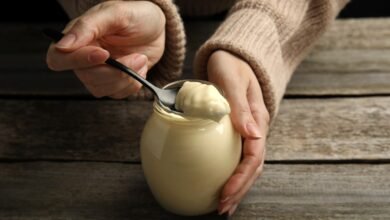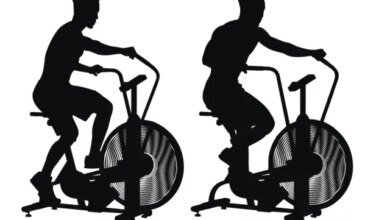Is Idli Good For Weight Loss?- HealthifyMe

This breakfast delicacy originally from South India has travelled far and wide. Yes, it holds cultural significance and is deeply ingrained in the culinary heritage of the region. Made generally with fermented batter of rice and black lentils, idli is now known to be a healthy food relished by many. The simplicity, nutritional value, and versatility of idli have contributed to its growing fame. Starting your day with a plate of idli and sambar will not just be delicious and filling but also provide you energy to kick start your day.
With the increasing focus on health and wellness, idli has gained popularity as a nutritious and weight-loss-friendly breakfast option. Its low calorie and fat content, and ability to provide satiety have made it a preferred choice for individuals aiming for a balanced and healthy diet.
Nutritional Profile of Idli
A medium sized idli contains:
- Calories: 73 kcal
- Carbohydrates: 15.2 g
- Dietary fibre: 1.3 g
- Protein: 2.2 g
- Fat: 0.3 g
Along with these macronutrients, idli contains other vitamins and minerals like Potassium, Magnesium, Phosphorus, Iron, Vitamin B1 and B2, Niacin and also Folate. Though these may differ from recipe to recipe, it can be said it is a perfectly balanced food. Additionally, the fermentation process of the idli batter may also enhance the bioavailability of certain nutrients, making them more easily absorbed by the body.
The Association of Idli and Weight Loss
1. Low In Calories
Idli is considered a low-calorie food. A single medium sized idli made with fermented rice typically contains around 70-75 calories. It is often recommended by nutritionists and dieticians to people who are about to start their weight loss journey. Consuming a low-calorie food like idli can help you create a calorie deficit, which is the stepping stone for weight loss. When your body burns more calories than you consume, it starts utilising stored fat for energy, leading to weight loss. However, make sure to limit your portion size. Having 1-2 idlis in breakfast is great to keep you satiated till lunch.
2. Low in Fat
Idli is also low in fat as it is steamed rather than fried. So, they do not require added oil or butter during the cooking process. Fat is the most calorie-dense macronutrient, containing 9 calories per gram that is higher than protein and carbohydrate. By reducing your intake of high-fat foods, you can decrease your overall calorie intake and even keep your cholesterol levels on check.
3. Contains Good Amount Protein
Protein is highly satiating, meaning it helps you feel fuller for longer periods compared to carbohydrates or fat. Various studies have claimed that protein helps in weight loss and management. It is because protein has a higher TEF (Thermic Effect of Food), so it requires more energy to digest and metabolise. A single serving of idli contains around 2.2 g of protein. So, it increases your energy expenditure and burns more calories during digestion, contributing to weight loss.
4. Nutrient Dense
Along with being rich in protein, idli provides essential nutrients like vitamins, minerals, and antioxidants. These micronutrients help in flushing out toxins from the body and also aid the smooth functioning of digestion. According to studies the well balanced nutrient contents of idli help ensure you’re nourishing your body adequately while working towards your weight loss goals.
It’s undeniable that, while idli can contribute to weight loss, it is equally essential to keep a tab on the overall calorie balance and portion control. Consuming idli alone may not lead to weight loss. A balanced diet, regular physical activity, and lifestyle changes are all needed to achieve sustainable weight loss.
Summary
Idli is recommended for weight loss due to its low calorie and fat content. The protein and fibre in idli creates a feeling of fullness, helps control hunger and increases energy expenditure during digestion. Idli also provides essential nutrients, aiding digestion and detoxification. However, it’s important to practice portion control and adopt a balanced diet and active lifestyle for sustainable weight loss.
Other Benefits of Idli
- Gluten-Free and Lactose-Free: Idli is a naturally gluten-free and lactose-free food. It is suitable for individuals with gluten intolerance, celiac disease, or lactose intolerance.
- Versatile and Customisable: Idli can be made with oats, rawa, ragi, moong dal etc. and enjoyed with a variety of accompaniments, such as sambar, chutney, or a healthy curry. This versatility of idli absorbs every flavor combination and adds to the overall nutritional value of the meal.
- Promotes blood oxidation- Idli contains iron which prevents oxygen from binding and doesn’t contain saturated fat that elevates cholesterol levels in the body. This reduces the risk of cardiovascular diseases.
- Reduces Obesity- Idli has a decent amount of protein. So, it helps in keeping you full for long and also improves your digestive health. Thus, reducing the chances of obesity and other related conditions like diabetes.
- Improves Gut Health- Studies have established that consuming a fermented food like idli adds essential probiotics into your diet that is best for keeping your gut happy and also boosts the absorption of micronutrients.
Healthy Idli Recipes
1. Sprouted Moong Idli
Ingredients:
- Moong Sprouts: 200 gms
- Urad Dal: 100 gms
- Fenugreek Seeds / Methi Seeds: 1/2 tsp
- Salt: 1 tsp
Method of Preparation:
- Soak the urad dal along with methi seeds for 2 hrs.
- After 2 hrs, grind the sprouted moong to a smooth paste.
- Drain the urad dal and grind to a smooth paste separately.
- Mix together and add salt. Keep it covered and let it ferment for 4 hrs.
- When ready, grease the idli molds, pour the batter and steam.
- Serve with spicy chutney/ sambar.
2. Instant Vegetable Oats Idli
Ingredients:
- Oats: 1 cup
- Semolina (Sooji / Rava): ½ cup
- Curd: 120 gm
- Carrot: 1
- Beans: 4 strands
- Green Peas: 1 tbsp
- Capsicum: 1 tbsp
- Chopped Coriander Leaves: 1 tbsp
- Salt: 1 tsp
- Oil: 1 tsp
- Mustard Seeds: 1 tsp
- Green Chilli: 1
Method of Preparation:
1.Dry roast the oats till it turns slightly brown. Cool and powder it.
2. Heat oil in the pan and add mustard seeds.
3. When the mustard seeds starts to sputter, add chopped green chilli, grated carrot, chopped beans and capsicum along with green peas and saute them in medium flame for 2 minutes
4. Add semolina to the pan and roast them for 3 minutes.
5. Add chopped coriander leaves and mix well and remove from flame.
6. Take the contents in the pan to a bowl and add powdered oats along with salt, curd and mix well
7. Add water to adjust the consistency of the batter like traditional idli batter.
8.Rest the batter for 15 mins.
9. Grease the idli moulds pour the oats idli batter.
10. Steam for 10 minutes.
11. Serve with Sambar, Chutney.
Tips for Making Idli Healthier
1. Using Wholegrain or Multigrain Batter:
Instead of using refined rice, you can opt for whole grain rice or multi-grain batter for making idli. Whole grains have the ability to retain their fibre content and also provide additional nutrients compared to refined grains. Studies discuss that a multigrain batter along with millets, quinoa, oats or brown rice provides other nutrients and nudges you to enhance the overall nutritional value of idli.
2. Adding Vegetables
Including vegetable purees or finely chopped vegetables like carrots, beans, spinach, zucchini and bell peppers adds colour, flavour, and texture to the idli, making it healthy, visually appealing and enjoyable. Vegetables also increase the fibre, vitamin, and mineral content of idli, making it a more wholesome meal.
3. Serving With Healthy Condiments and Curries
Idli does not have its own distinctive flavour. But it can soak all the goodness of a chutney or a sambar. You can always amp up serving your idli with a variety of chutneys like coconut, tomato, mint, garlic, peanut etc. If you plan to also serve an accompaniment to provide a range of nutrients, choose between vegetable stews to chicken/egg curries.
Summary
Using whole grain or multigrain batter for making idli is a healthier option compared to refined rice. Whole grains retain fiber and provide additional nutrients, while multigrain batters enhance nutritional value. Adding vegetables increases fiber, vitamin, and mineral content. Serving idli with healthy condiments or curries not only enhances taste but adds to your nutritional requirement for the day.
HealthifyMe Suggestion
Traditional Idli may not be rich in fiber on its own but a few healthy twists in the recipe can make this amazing breakfast option high in fiber too.
You can add vegetables like peas, broccoli, carrot, capsicum, beans etc. to your idli batter to make it more fibre-rich. Another option is to prepare idli batter by using whole grains like ragi, jowar, broken wheat or oats. You can also add nuts and seeds to the batter to increase its protein and fiber content along with essential vitamins and minerals.
Conclusion
In conclusion, idli proves to be a beneficial food option, especially for those looking to lose weight. It’s low-calorie and low-fat nature makes it a guilt-free choice for people. This breakfast favoruite if also high in fibre and protein that aids your satiety and calorie control. Incorporating idli into a balanced diet can provide a range of essential nutrients, promoting overall health and well-being.
Furthermore, idli’s versatility allows for various accompaniments and customisation options, making it an adaptable and enjoyable meal choice. Its fermentation process not only enhances its digestibility but also contributes to a healthier gut. Overall, idli stands as a versatile, nutritious, and weight-loss-friendly option that can be a valuable addition to one’s diet.
Disclaimer: The purpose of this article is just to disperse knowledge and raise awareness. It does not intend to replace medical advice from professionals. For further information please contact our certified nutritionists Here
Frequently Asked Questions (FAQs)
Q. Is idli a good option for weight loss?
Yes, idli is considered a good option for weight loss. It is low in calories and fat, contains good amount of protein, and can provide a sense of fullness, aiding in calorie control.
Q. How many calories are there in a typical idli?
A medium sized idli made with fermented rice contains around 70 to 75 calories.
Q. Can idli be consumed for breakfast during a weight loss journey?
Yes, idli can be an excellent choice for breakfast during a weight loss journey. Its low-calorie content and protein make it a filling and nutritious option that can keep you satiated till lunch.
Q. Should I eat plain idli or with chutney for weight loss?
Plain idli is a healthier option for weight loss as it contains fewer calories. However, adding a nutritious chutney can enhance the taste and provide additional nutrients.
Q. Is idli gluten-free?
Yes, traditional idli made from rice and lentils is naturally gluten-free. However, be cautious of any added ingredients that may contain gluten.
Q. Can I eat idli if I have diabetes?
Idli can be a suitable food option for individuals with diabetes due to its low glycemic index and balanced macronutrient composition. However, portion control and overall dietary balance are important considerations.
Research Sources
- Fiber Intake Predicts Weight Loss and Dietary Adherence in Adults Consuming Calorie-Restricted Diets: The POUNDS Lost (Preventing Overweight Using Novel Dietary Strategies) Study
https://www.ncbi.nlm.nih.gov/pmc/articles/PMC6768815/ - The role of protein in weight loss and maintenance
https://pubmed.ncbi.nlm.nih.gov/25926512/ - Preparation of idli batter, its properties and nutritional improvement during fermentation
https://www.ncbi.nlm.nih.gov/pmc/articles/PMC3551127/ - Diversity and Succession of Microbiota during Fermentation of the Traditional Indian Food Idli
https://www.ncbi.nlm.nih.gov/pmc/articles/PMC6581174/ - Traditional Indian breakfast (Idli and Dosa) with enhanced nutritional content using millets
https://www.researchgate.net/publication/263605222_Traditional_Indian_breakfast_Idli_and_Dosa_with_enhanced_nutritional_content_using_millets





